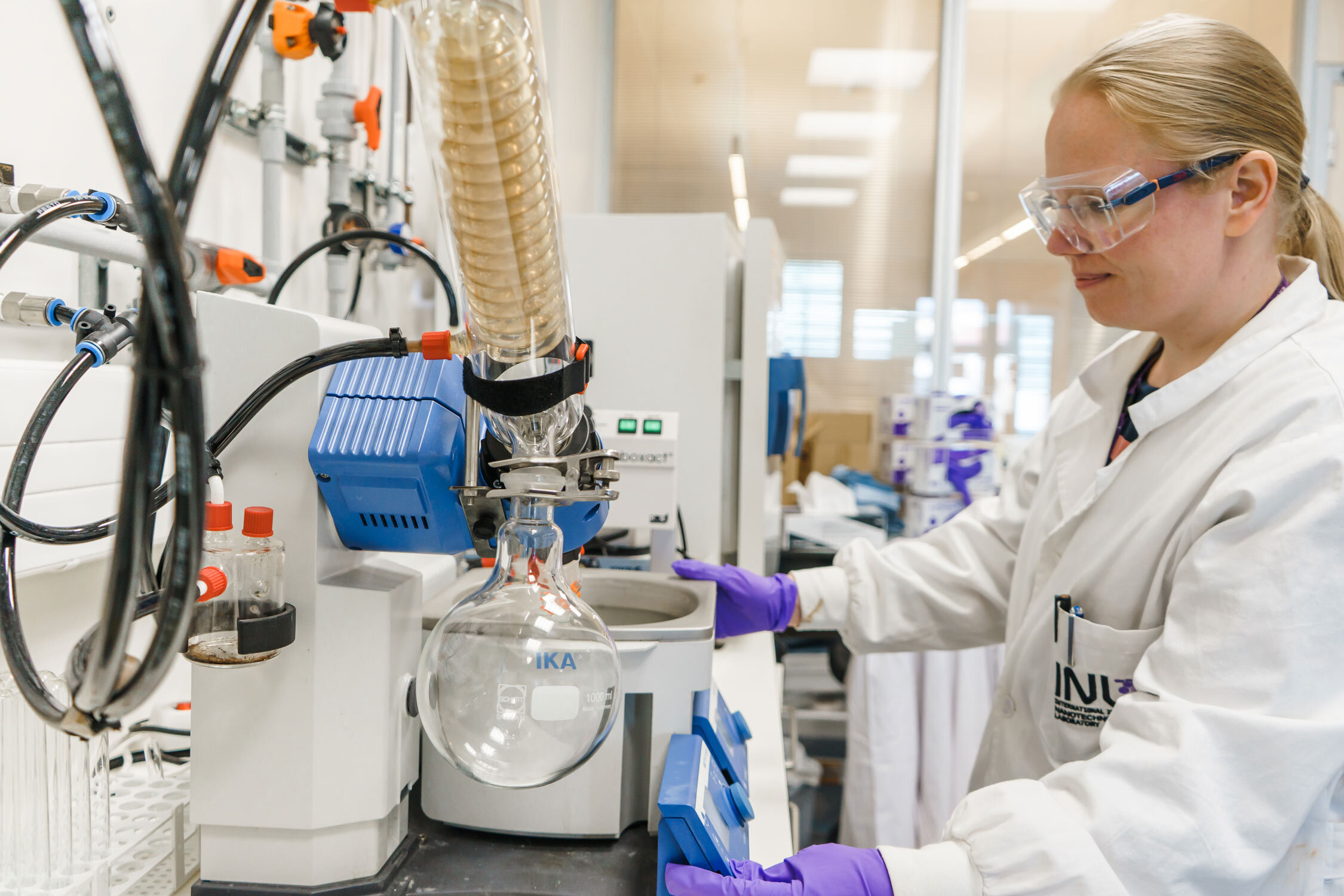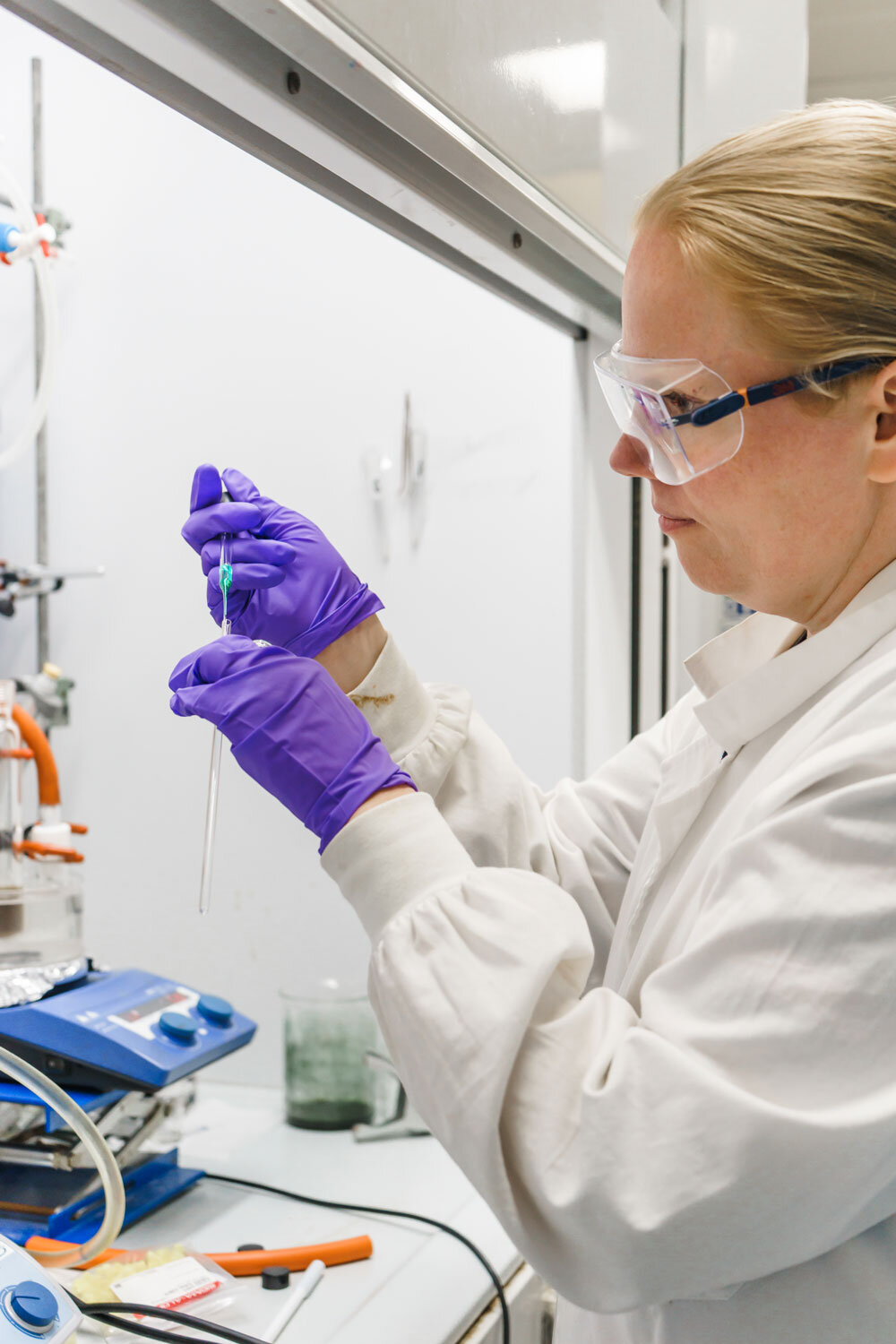
Interview with Laura Salonen
June 19, 2020
Laura Salonen is currently a Staff Researcher in the Nanochemistry research group. She employs organic chemistry methods for the development of innovative nanomaterials. Her main research focuses on the design and synthesis of covalent organic frameworks and composites for water treatment and catalysis.
Can you tell us a bit about your path and your main area of work?
I come from Finland and that’s where I obtained my Master’s degree in Chemistry. I did my PhD in Switzerland studying intermolecular interactions in protein-ligand complexes and afterwards moved to Germany to carry out post-doctoral research on the design and synthesis of aromatic scaffolds for covalent organic frameworks for photovoltaic applications. I joined INL in 2013 as a research fellow through the Marie Skłodowska-Curie COFUND NanoTRAINforGrowth program. I am now working in the Nanochemistry group as a staff researcher. Currently, the main part of my work is focused on the development of new nanomaterials for water treatment and catalysis.
What is the importance of your research?
We are working on materials that can contribute to a more sustainable future, for example by developing new catalytic nanomaterials that can carry out industrially and environmentally relevant chemical transformations more efficiently than catalysts known today. On the other hand, we are preparing adsorbents that can capture toxic chemicals from water, such as arsenic or persistent organic pollutants, in an efficient manner.
What challenges have you faced being a woman in science?
I’ve had some experiences in the past where I felt, as a woman, a hindrance in the communication within the team. This really affected the development of the projects and had a negative impact on the working atmosphere. Currently, I am very lucky to work in a diverse and international group, where people are treated equally.
Briefly, what excites you about your next projects?
I find the whole process of designing and realizing new materials for a specific purpose, with the objective of improving the quality of life of people, very exciting. As an example, together with Begoña Espiña from the Water Quality group, we recently had the opportunity of testing our adsorbent material, designed to capture water pollutants, in the real environment in collaboration with the University of Lisbon, and the results are very promising. The next step is to focus on the scale-up and formulation of the material for better applicability, bringing the project a step closer to providing an efficient way of monitoring the presence of pollutants in water.






